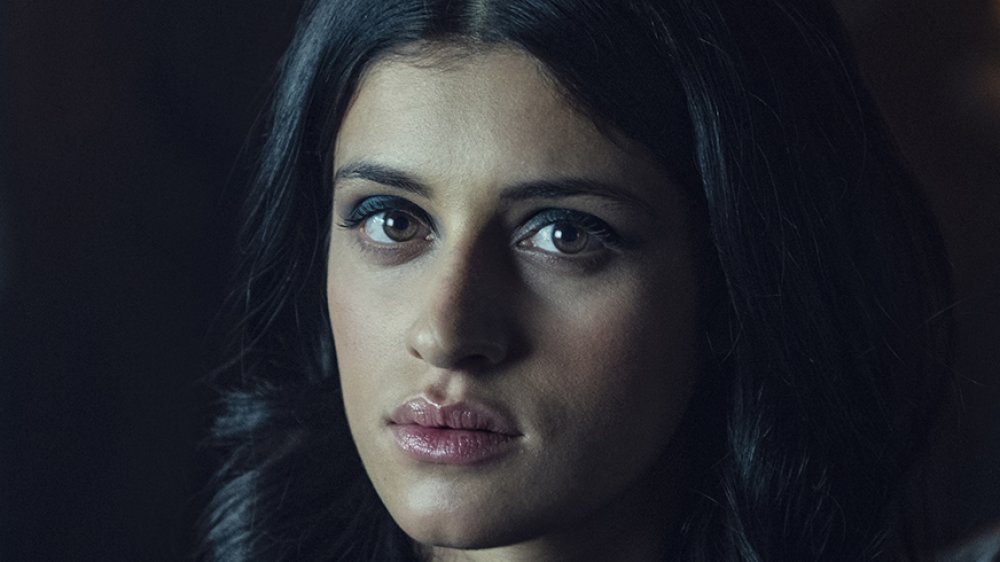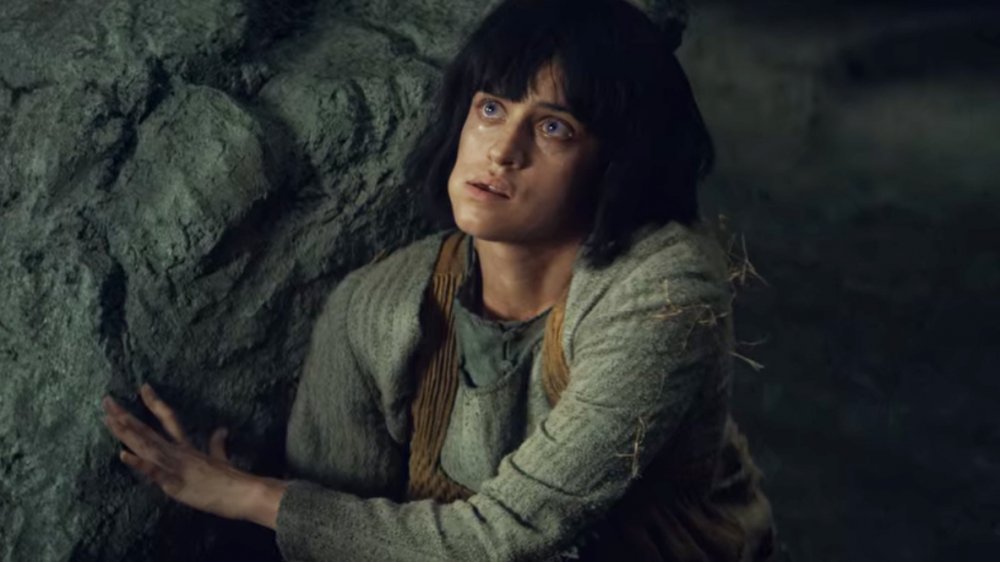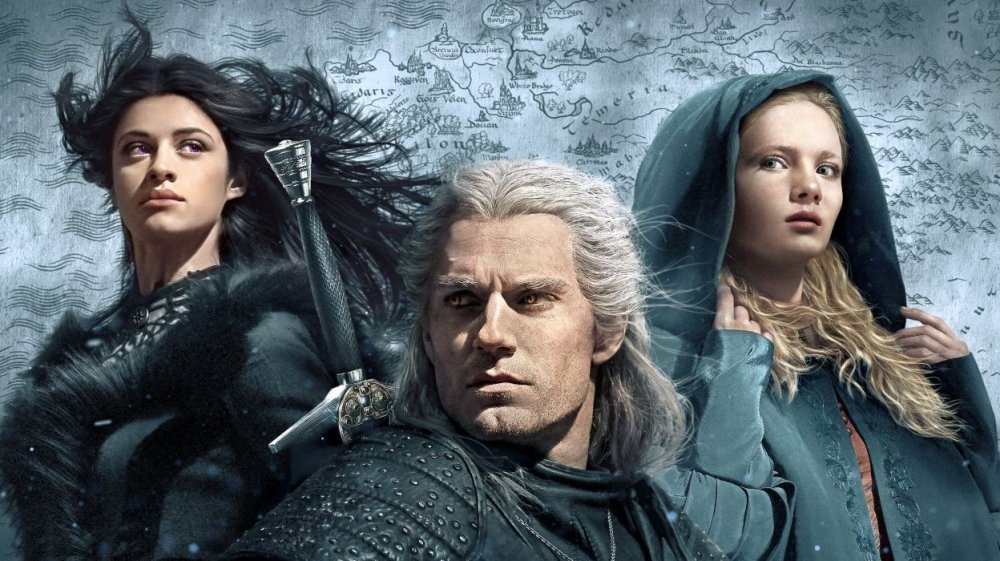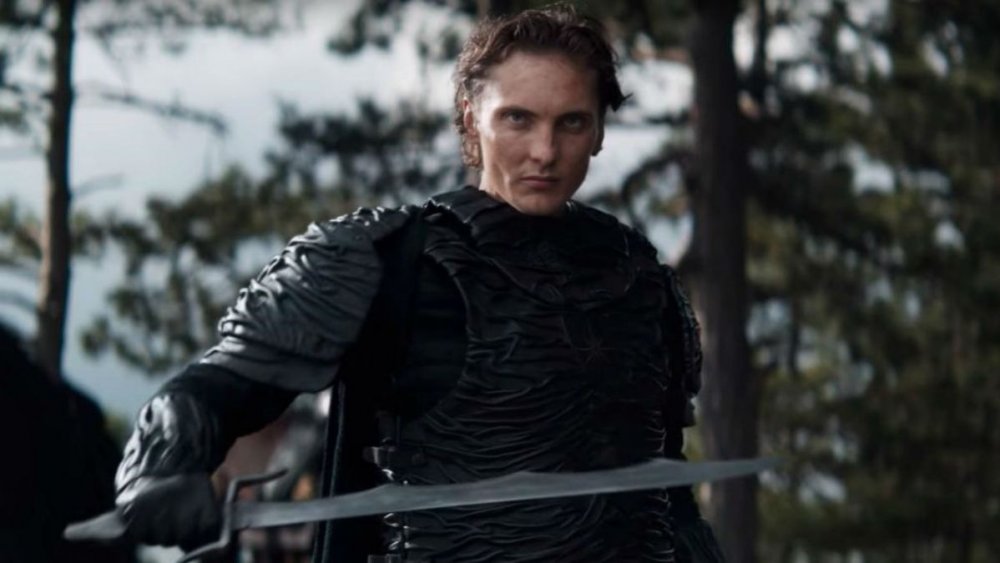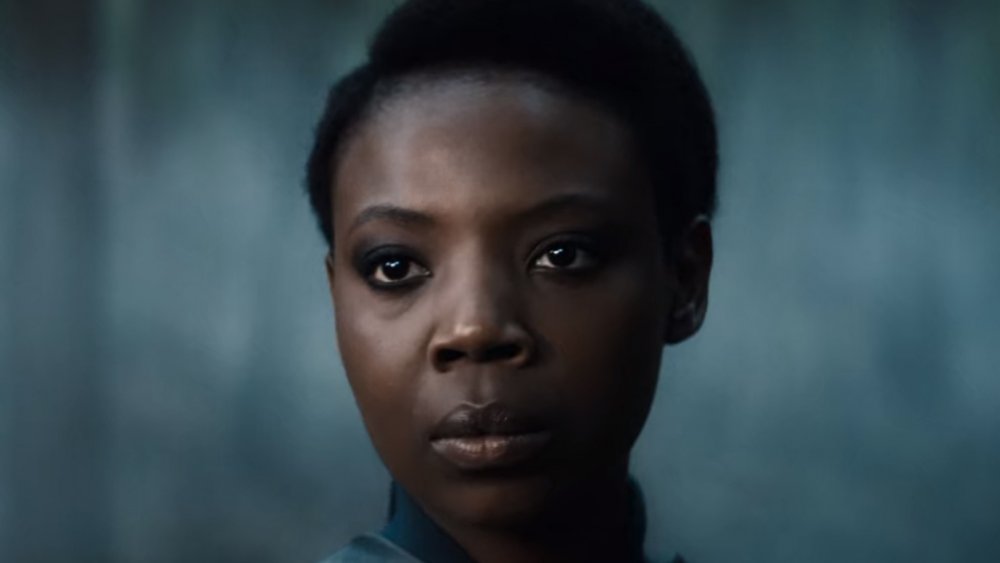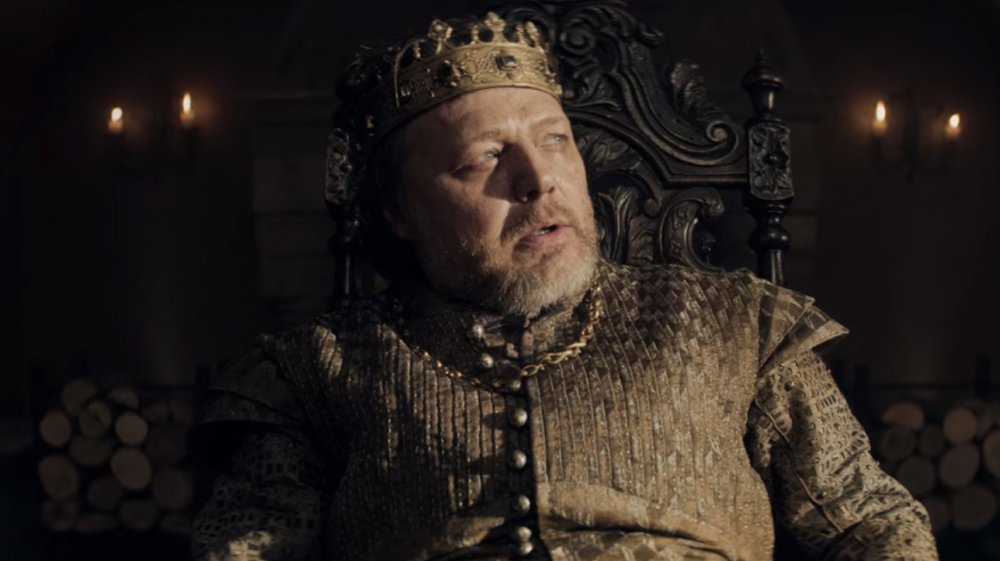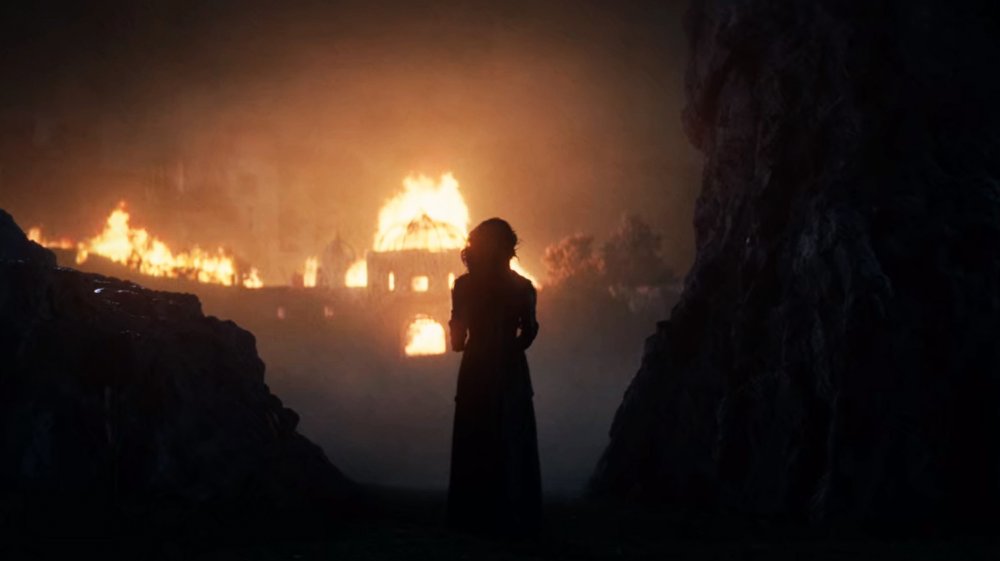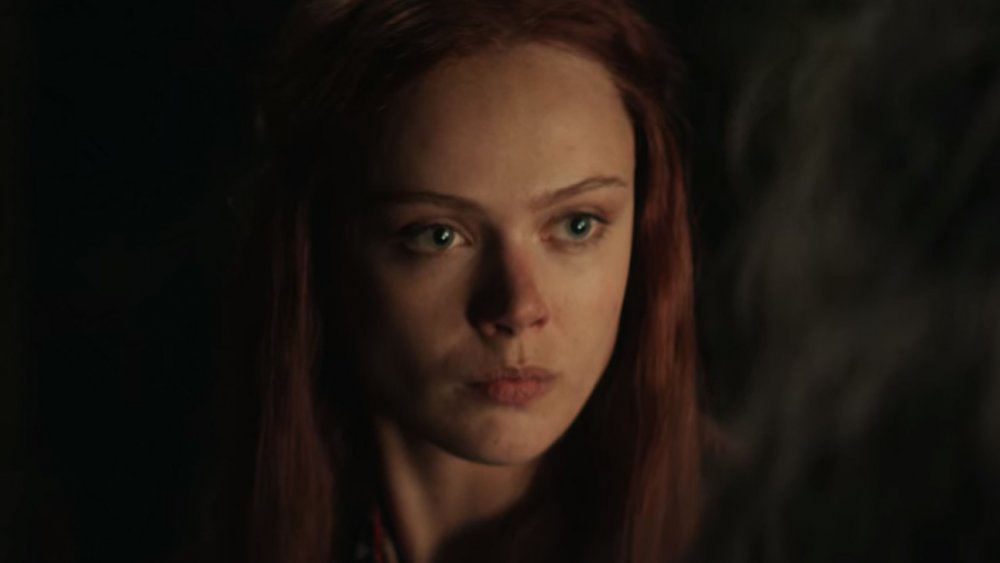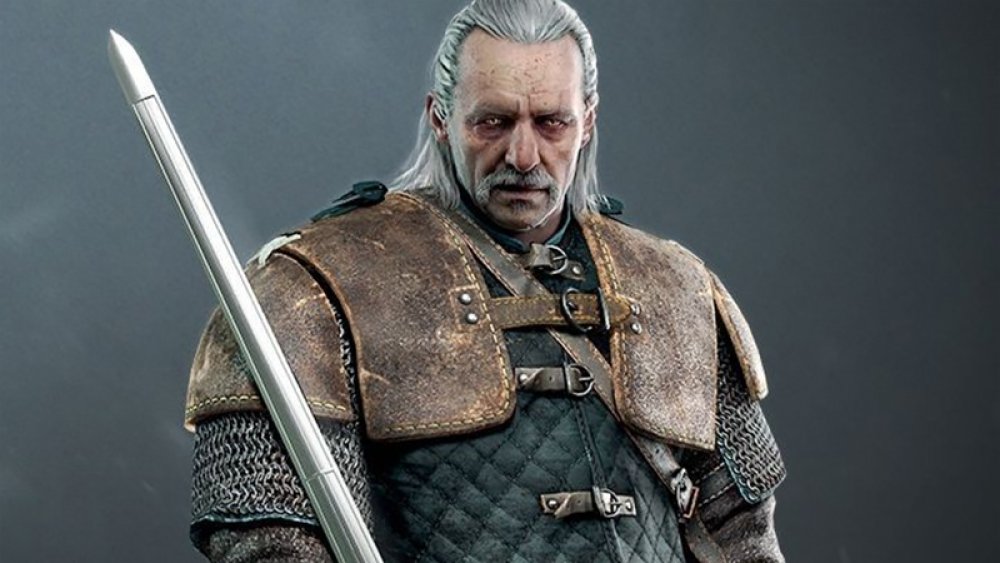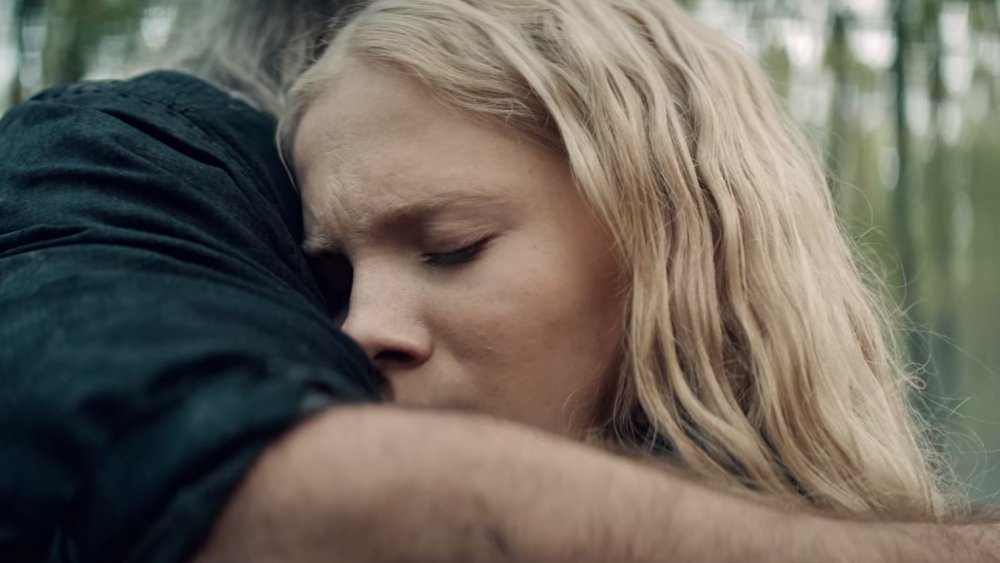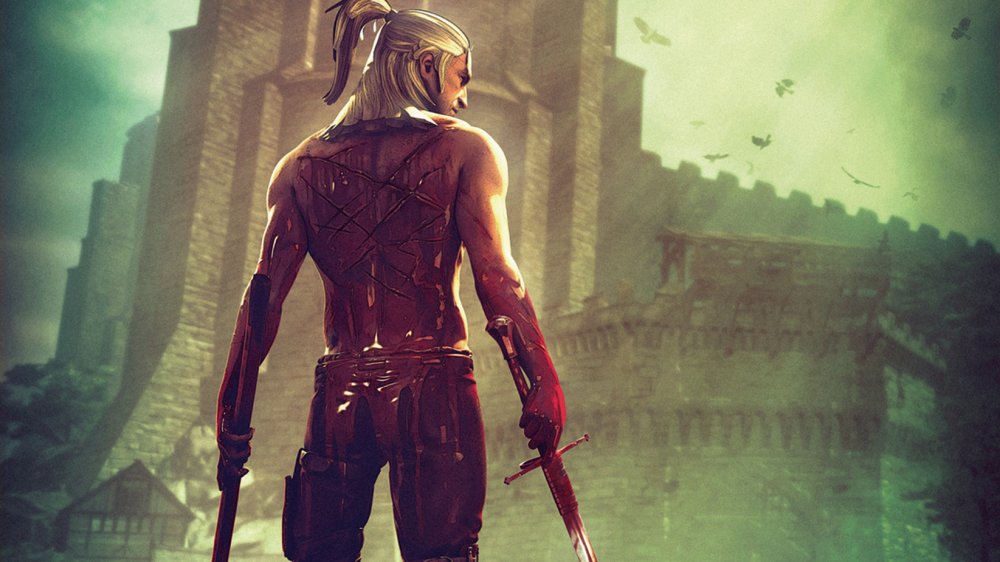The Ending Of The Witcher Explained
Netflix's The Witcher delivers on its promise of high-fantasy monster hunting, but it's not always easy to follow. The show takes place across multiple timelines. It has three protagonists, none of whom are ever all together in the same scene. It's just as political as Game of Thrones, but there are even more warring factions to keep track of and everyone's name is impossible to pronounce.
If you made it to the end of the first season — and if you haven't, note that this is full of spoilers — and feel a little lost, it's not your fault. The Continent is a weird place, and making sense of it all — especially if you've never read Andrzej Skaposki's books or played CD Projekt Red's Witcher video games — is no simple task. The Witcher sets up many intriguing ideas for season two (which, thankfully, is already a go), which should be much more streamlined, but you'll need to understand how season one ended to get the most out of it. Here's what you need to know.
The Witcher timeline, explained
You probably picked up on this already, but The Witcher is spread across three separate timelines, and you need to know what happened when in order to understand the story. The show starts dropping hints about its unconventional structure as early as the second episode, and makes the timeline split quite clear in episode four, but it's still not quite clear how much time is passing between episodes (it doesn't help that nobody other than Ciri — not even the regular human characters — seem to age much).
Yennefer's time at the magic academy in Aretuza and her 30-year stint in the court of Aedirn happen before everything else. When Queen Kalis and her baby die and Yennefer decides to go independent, Geralt catches up with her. By episode five, they're on the same timeline.
Geralt's tale comes next and lasts for over a decade. Geralt is an experienced witcher by the time he rolls into Blaviken, and his next few adventures seem to take place a few months apart — his reputation grows fast, but not that fast. Geralt first visits Cintra in episode four. When he returns in episode seven, 12 years have passed, meaning episodes five and six are likely years apart.
Ciri's story only lasts for about a week, and begins 12 years after Geralt's first visit to Cintra. By episode seven, Geralt and Yennefer's stories are only about a week behind Ciri's. By the finale, everything is happening at the same time.
Finally, everyone together — almost
Even though "Much More," the final episode of The Witcher's first season, is happening in one more-or-less united timeline, our characters don't cross paths until the very end. Ciri spends the bulk of the episode with a kindly commoner who found the princess passed out in the field, and wants to adopt Ciri as her daughter.
Meanwhile, Geralt begins the episode in the same refugee camp that Ciri visited in episode two, where a local merchant is clearing out dead bodies. Geralt defends the merchant from some zombie-like monsters, but is wounded in the process. The merchant — who happens to be the commoner's husband — puts Geralt on his cart and starts towing him to safety while the Witcher succumbs to a flurry of visions.
Yennefer, whose adventure takes up most of the episode, makes a stand with 22 other mages at Sodden, where they fight to defend the north from the Nilfgaardian army. It's a brutal, bloody battle with many casualties on both sides. In the aftermath, Tissaia magically calls out for Yennefer. Ciri hears her and heads to the woods, where she meets Geralt for the first time. She asks the witcher who Yennefer is, but before he can answer the credits roll.
Nilfgaard rises
Why, exactly, did Nilfgaard invade the north, raze Cintra, and turn Sodden into a massacre? It's after more than just Ciri. If you track Nilfgaard's history over The Witcher's three timelines, you'll actually see the story of a humiliated nation that rises from the ashes in order to restore its lost glory, albeit in the most violent way possible.
Early on, before Yennefer's ascension, Nilfgaard is a joke. Its king, Fergus, wastes the kingdom's money on girls and other frivolous pursuits. The Brotherhood of Sorcerers hope that a court mage can help bring Fergus under control. Instead, sometime around Geralt's story in episode three, someone known as the Usurper organizes a rebellion, overthrows Fergus, and takes the crown.
The Usurper's reign doesn't bring much honor to Nilfgaard. When a Nilfgaardian lord asks to marry princess Parvetta in episode four, Queen Calanthe makes fun of him and dismisses him out-of-hand. 12 years later, Nilfgaard gets its revenge. Sometime between episodes four and seven, Geralt time, Fergus' son Emhyr reclaims the Nilfgaardian throne and sends his army out to conquer the north. That's when Cintra burns, and how Sodden becomes the site of the mages' last stand.
A tale of two mages
Fourteen of the 22 mages at Sodden lose their lives, thanks largely to a sorceress named Fringilla. While Fringilla doesn't play a big part in the show until the final episode, she's instrumental to the final battle — and her rise is all Yennefer's fault.
Years before the Usurper takes power, the Brotherhood of Sorcerers want to send Yennefer to Nilfgaard to serve as the court mage. They think that Yennefer's strong personality will help bring reckless King Fergus under control, and realize that sending Yennefer to her home kingdom of Aedirn would be a political disaster. Cintra, a country that has hates mages and elves, is Aedirn's main trading partner. Assigning Yennefer, as a mage with elvish ancestry, to Aedirn would be seen as a major affront by Cintran authorities.
So, the Brotherhood decides to send Yennefer to Nilfgaard and Fringilla to Aedirn. However, Yennefer intervenes. After her Ascension, Yennefer uses her newfound beauty to get in good with Aedirn's king, and ends up taking Fringilla's place.
Fringilla goes to Nilfgaard instead. Over 30 years later, she's still there. In fact, instead of stopping Emhyr's conquest, Fringilla takes his side. That's why she's on the front lines at Sodden: She's been Nilfgaard's ally for decades. If Yennefer had simply done what the Brotherhood asked and gone to Nilfgaard in Fringilla's place, none of the deaths at Sodden would've happened.
King Foltest to the rescue
Amazingly, the mages — the ones who live, anyway — manage to hold Sodden until help arrives from one of the northern kingdoms. You know that king who arrives, riding a white horse with an army behind him? That's King Foltest of Temeria, and if that name sounds familiar, it should. You've met him before.
It's hard to make out who Foltest is in "Much More" — he's only onscreen for a second — but that's the same king Geralt met in "Betrayer Moon." Y'know, the guy who slept with his sister, who then died and gave birth to the striga that Geralt had to fight? Yeah, that's him.
Foltest shows up thanks to Triss Merigold, the mage assigned to his court, who seems to die at the battle of Sodden (although if the show follows the books, it's a little more complicated than that). The king still owes Triss for helping Geralt save his daughter. It's just too bad that he took his sweet time getting there.
Is Yennefer dead?
"Much More" ends on a couple of cliffhangers. Ciri and Geralt meet for the first time and, more importantly, Yennefer seems to have disappeared. After unleashing some major magic on the Nilfgaardian army, Yennefer more or less vanishes. The last we hear of her, Tissaia is worriedly calling out her name.
Given that "Much More" clearly establishes that using powerful magic can kill a person, it's cause for alarm. Throw in Borch Three Jackdaws' warning in episode six that Geralt will lose Yennefer no matter how hard he tries to keep her, and things don't look good for our favorite sorceress.
Don't worry too much. Yennefer is a major player in Andrzej Sapkowski's books, and unless the show is planning to deviate pretty radically from its source material (which, given how faithful the show has been so far, would be quite surprising) the sorceress should pop up in season two. It might take a little while — a search for Yennefer seems like a great plot to kick off the next adventure — but we're almost certain she'll be there.
The mysterious healer
Let's talk about Geralt's visions. While Yennefer is defending the north from Nilfgaard's advance, Geralt spends most of the season finale laying in the back of a hay cart, suffering poison-induced flashbacks to his past.
The biggest revelation to come out of those visions is that Visenna raised Geralt when he was a small boy. In fact, while the show doesn't make it entirely clear, Witcher lore dictates that Visenna is Geralt's biological mother. Apparently, every sorceress becomes infertile through use of magic — remember, Yennefer was forcibly sterilized as part of her Ascension — and it's not clear if Visenna even attended the school at Aretuza.
Visenna didn't take care of Geralt for long, though. When he was still young, she abandoned him at Kaer Morhen, where Witchers live and are trained. In "Much More," Geralt comes face-to-face with his mother for the first time in decades in a scene during which she heals Geralt's wounds and departs, leaving Geralt to deal with his destiny on his own. It could be magic or just a hallucination, but whether Visenna actually came to visit Geralt or not, you can expect more details about the witcher's childhood in season two.
Introducing Vesemir
The other major figure introduced in Geralt's visions is Vesemir. After Visenna disappears, it's Vesemir who comes to lil' Geralt's aid, and Geralt utters his name a few times during his poison-induced delirium.
The Witcher doesn't explain who Vesemir is, but fans of the franchise know him quite well. Like Geralt, Vesemir is a witcher. He lives at the witcher stronghold, Kaer Morhen, and is one of the oldest and most respected members of the fraternity. Thanks to a past adventure gone awry, Vesemir rarely leaves Kaer Morhen. However, he's one of the best instructors the witchers have — he's the reason why Geralt is so good with a sword — and he functions as a de facto father figure to Geralt.
At least, that's the case in the books. The Witcher will probably make a few changes to the story, but the season finale has already put the basic pieces in place. Expect Vesemir to pop up during season two.
Family matters
Ultimately, the first season of The Witcher is about three people trying to find a family. Not just any family, though. The right family. We don't know it until the finale, but the Geralt we meet at the beginning of the show was abandoned by his mother. Yennefer is sold off by her foster parents and deprived of the ability to have children. Ciri's family is killed in the very first episode.
Each one of these characters has the opportunity to find a new family over the course of the season, and each one rejects it. Yennefer trades a comfortable life with Istredd for more power. Ciri could've settled down with the dryads in Brokilon or the kind family in the woods, but something keeps her moving forward. Geralt sides against Renfri and ultimately drives Jaskier away (although we have a feeling the irascible bard will be back eventually).
Instead, our three heroes find comfort in each other. Whether Yennefer wants to admit it or not, she and Geralt have a deep, meaningful connection. Geralt and Ciri, linked by destiny, finally meet. In the books, the trio form a makeshift nuclear family, with Geralt playing dad and Ciri serving as the child Yennefer can't technically have. The show isn't there quite yet, but if you're paying attention, it's very clear where it's going.
What comes next
By the end of "Much More," The Witcher has blown through the first book in the series, The Last Wish, and covered much of the material in the second, Sword of Destiny. Those are both short story collections, which explains The Witcher's monster-of-the-week format.
Blood of Elves, the next book, looks like it'll be the basis of season two (Sword of Destiny ends when Geralt and Ciri meet). Unlike the previous books, Blood of Elves is a proper novel. It kicks off what's known as the "Witcher Saga," a five-book series focusing on Geralt, Ciri, Yennifer, and their struggles against Nilfgaard. The Witcher's first season was largely backstory. With the pieces in place, the show is ready to move on to Blood of Elves and beyond.
Of course, technically, the final Witcher book published, Season of Storms, takes place during Geralt's early adventures, before he and Ciri officially crossed paths. While Season of Storms isn't a short story collection, it is fairly episodic, and parts of it could be adapted into some standalone adventures for Geralt and the gang. Given the show's trajectory, though, we'll probably move straight on to the saga. Buckle up, folks. The Witcher is just getting started.
